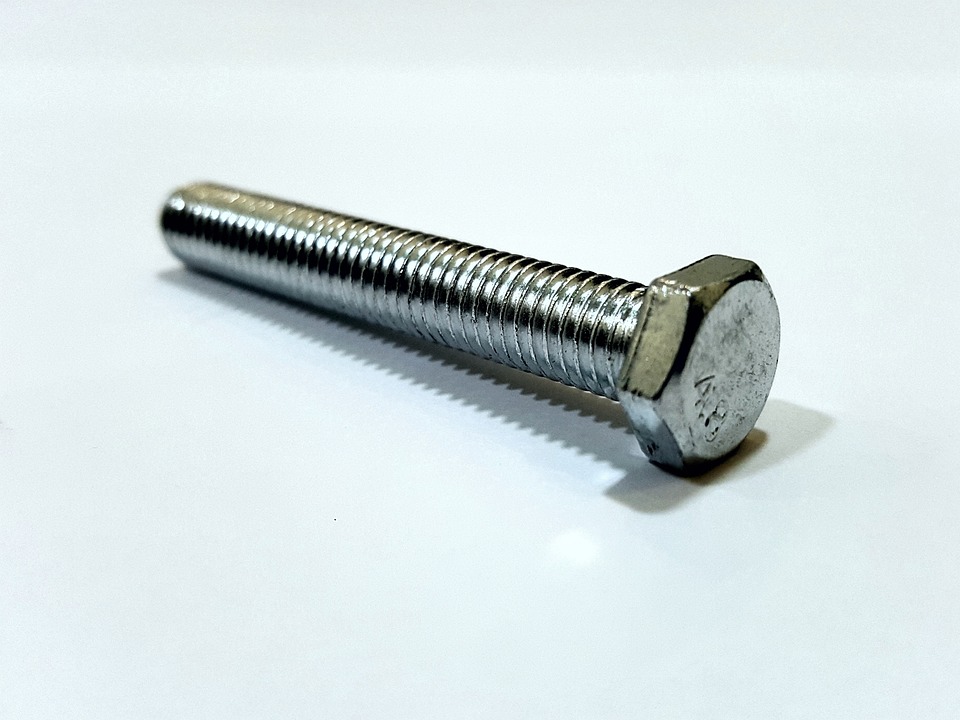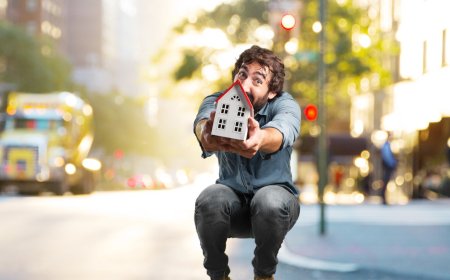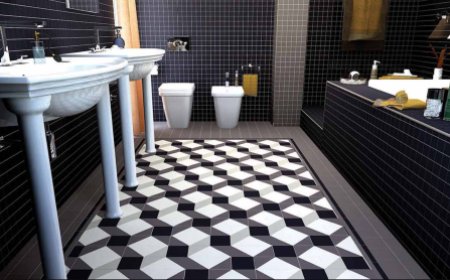How to Find New Orleans Live Music Venues Near Me
How to Find New Orleans Live Music Venues Near Me New Orleans is more than a city—it’s a living symphony. From the soulful wail of a trumpet drifting through Frenchmen Street to the syncopated rhythms of second-line parades echoing down Royal Street, music isn’t just entertainment here; it’s the heartbeat of the culture. For visitors and locals alike, discovering authentic live music venues near y
How to Find New Orleans Live Music Venues Near Me
New Orleans is more than a city—it’s a living symphony. From the soulful wail of a trumpet drifting through Frenchmen Street to the syncopated rhythms of second-line parades echoing down Royal Street, music isn’t just entertainment here; it’s the heartbeat of the culture. For visitors and locals alike, discovering authentic live music venues near you isn’t just about finding a place to sit and listen—it’s about immersing yourself in a centuries-old tradition that shaped jazz, blues, R&B, and beyond. But with hundreds of venues scattered across neighborhoods like the French Quarter, Marigny, Bywater, and Uptown, knowing where to start can feel overwhelming. This guide will walk you through every step needed to find the best live music venues near you in New Orleans, whether you’re planning a night out, exploring on a whim, or seeking hidden gems off the tourist trail.
Step-by-Step Guide
Finding the right live music venue in New Orleans requires more than just asking a passerby for recommendations. It demands a strategic approach that combines digital tools, local knowledge, timing, and cultural awareness. Follow this step-by-step process to ensure you never miss a performance that matches your taste.
Step 1: Define Your Music Preferences
Before you search for venues, identify what kind of music you want to experience. New Orleans offers everything from traditional Dixieland jazz at Preservation Hall to funk and soul at Tipitina’s, experimental indie rock at the Hi-Ho Lounge, and brass band parades in the streets. If you’re drawn to classic jazz, prioritize venues known for that genre. If you prefer modern sounds, look toward neighborhoods like Bywater or the Marigny, which host more eclectic lineups. Understanding your preference helps you filter options efficiently and avoid overcrowded tourist traps that may not align with your musical interests.
Step 2: Use Real-Time Event Aggregators
Start your search with platforms designed to aggregate live music events across the city. The most reliable include:
- NOLA.com’s Music Calendar – Updated daily, this official city partner site lists venues, performers, times, and ticket links.
- Frenchmen Street’s Official Event Page – A curated hub for nightly performances on the most famous music corridor in New Orleans.
- Eventbrite and Bandsintown – Both platforms allow you to filter by location, genre, and date, and send push notifications for upcoming shows near you.
Set up alerts for keywords like “jazz,” “brass band,” or “live music” within a 2-mile radius of your current location. These tools pull data directly from venue calendars, ensuring you get accurate, real-time information.
Step 3: Check Venue Websites and Social Media
Many smaller venues in New Orleans don’t rely on third-party platforms. Instead, they update their schedules on their own websites or Instagram pages. For example:
- The Spotted Cat Music Club posts its weekly lineup every Monday on Instagram.
- Tipitina’s updates its calendar every Thursday for the upcoming weekend.
- Snug Harbor Jazz Bistro lists artist bios and set times on its website, helping you choose based on your favorite musicians.
Follow your top 5 venues on social media. Turn on notifications so you’re alerted the moment a new show is announced. Many local artists announce surprise pop-up sets or last-minute changes here before they appear on larger platforms.
Step 4: Leverage Local Apps and Digital Maps
Download apps specifically designed for New Orleans music lovers:
- Live Music NOLA – A community-driven app with user-submitted reviews, map overlays, and real-time crowd estimates at venues.
- Google Maps – Search “live music near me” and sort by “Open Now” or “Highest Rated.” Filter by “Music Venue” under “Places” to eliminate restaurants or bars without live performances.
- Yelp – Use the “Live Music” filter and read recent reviews to confirm if the music is still happening and if the sound quality is good.
Enable location services so these apps detect your current position and prioritize venues within walking distance. This is especially useful if you’re staying in the French Quarter and want to avoid long cab rides after dark.
Step 5: Visit During Peak Hours for Spontaneous Discovery
Sometimes the best music isn’t advertised—it’s happening right in front of you. Between 6 PM and 10 PM, walk through Frenchmen Street, Royal Street, and Decatur Street. You’ll hear music spilling out of doorways. Stop when the rhythm pulls you in. Many venues, especially on Frenchmen Street, don’t require tickets. Just walk in, buy a drink, and enjoy. Some of the most memorable performances happen in unassuming spots: a corner bar with a saxophonist playing for tips, a balcony overlooking a courtyard, or a street musician whose band suddenly expands into a full ensemble.
Step 6: Ask Locals for Hidden Gems
Locals know where the real magic happens. Strike up a conversation with a bartender, a shop owner, or even a street performer. Ask: “Where’s your favorite place to hear live music that tourists don’t know about?” You’ll often hear about places like:
- The Maple Leaf Bar – A Uptown institution known for its Thursday night Rebirth Brass Band performances.
- The Maison – A cozy Frenchmen Street spot with intimate jazz sets and a legendary piano bar.
- Gasa Gasa – A warehouse-turned-venue in Bywater that hosts indie rock, experimental, and underground acts.
Don’t be afraid to ask for recommendations multiple times. Different people will point you to different spots depending on their personal taste—this helps you build a fuller picture of the scene.
Step 7: Time Your Visit Around Festivals and Events
New Orleans hosts over 130 music festivals annually. Major ones like Jazz Fest (late April–early May), French Quarter Fest (April), and Voodoo Fest (October) draw national attention. But smaller, neighborhood-based events are often more authentic:
- St. Charles Avenue Jazz Series – Free outdoor concerts on Sundays in the spring.
- Marigny Opera House Block Parties – Weekly performances in a historic church-turned-venue.
- Bywater Art Walks – Often include live music from local bands in alleyways and pop-up galleries.
Check the New Orleans Tourism website or WWOZ 90.7 FM’s event calendar for these events. Arrive early—many are free and fill up quickly.
Step 8: Plan Around Set Times and Crowds
Most venues in New Orleans operate on a set schedule:
- First set: 8:00 PM – 9:30 PM
- Second set: 10:00 PM – 11:30 PM
- Third set (if applicable): Midnight – 1:30 AM
Arriving at the start of the first set gives you the best seats and a quieter atmosphere. Second sets are livelier but often more crowded. Third sets are for dedicated fans and night owls—many venues serve drinks until 2 AM, but music usually ends by 1:30 AM. Avoid arriving after 10:30 PM if you want to see a specific artist; many popular acts finish their second set by then.
Step 9: Use Public Transit and Walking Routes
Driving in New Orleans is often unnecessary and inconvenient, especially in the French Quarter. Use the RTA Streetcar (St. Charles line runs from Uptown to the French Quarter) or ride-sharing apps like Uber and Lyft. Plan your route ahead of time using Google Maps’ walking feature. Most music venues are within a 10–15 minute walk of each other on Frenchmen Street or Royal Street. Walking not only saves money but lets you discover impromptu street performances along the way.
Step 10: Verify Entry Requirements and Cover Charges
Not all venues are free. While many on Frenchmen Street operate on a “pay at the door” model ($5–$15), others like Snug Harbor or Preservation Hall require advance tickets ($25–$60). Always check:
- Is there a cover charge?
- Do you need to buy tickets in advance?
- Are there age restrictions? (Many venues are 21+ after 9 PM.)
- Is photography allowed?
Some venues offer free admission with a drink purchase. Others may have a minimum spend. Confirm this before entering to avoid surprises.
Best Practices
Knowing where to look is only half the battle. To truly maximize your experience, follow these best practices that locals and seasoned visitors swear by.
Arrive Early, Stay Late
Arriving 15–20 minutes before the first set ensures you get a good spot near the stage. Many venues have limited seating, and standing room fills up fast. Staying for the second set gives you a chance to hear different musicians or extended improvisations. Some of the most powerful performances happen after midnight, when the crowd is thinner and the musicians are fully warmed up.
Support the Musicians
Most artists in New Orleans rely on tips and drink sales. Even if there’s no cover charge, buy a drink or two. Place cash in the tip jar—many musicians don’t receive a fixed salary. A $5 tip can mean the difference between a musician being able to afford rent or not. This isn’t just etiquette; it’s essential to sustaining the culture.
Respect the Space
Live music venues in New Orleans are often small, historic, and intimate. Avoid blocking views, talking over performances, or using flash photography. Turn off your phone ringer. If you’re recording, ask permission first. These venues thrive on mutual respect between audience and artist.
Dress Appropriately
There’s no strict dress code, but most venues lean toward casual to smart-casual. Avoid flip-flops and beachwear in upscale spots like Snug Harbor. In the Marigny or Bywater, anything goes—jeans, T-shirts, and even costumes are common. When in doubt, dress like a local: comfortable, stylish, and weather-appropriate.
Learn the Lingo
Understanding local terms enhances your experience:
- Second line – A celebratory parade with a brass band and dancing crowd.
- Spontaneous jam – An unplanned musical collaboration between musicians.
- Open mic night – Often held on Mondays, great for discovering new talent.
- Brass band – Typically includes trumpets, trombones, tubas, and snare drums.
Knowing these terms helps you engage with musicians and other patrons, making your visit more immersive.
Keep a Music Journal
Bring a small notebook or use your phone to jot down names of bands, venues, and songs you love. Many musicians release their own recordings or have Bandcamp pages. Later, you can revisit their music and even purchase albums to support them. This turns a night out into a lasting connection with the city’s musical legacy.
Stay Safe and Aware
While New Orleans is generally safe for tourists, especially in music districts, always stay alert. Stick to well-lit streets. Avoid carrying large amounts of cash. Use ride-sharing apps if you’re far from your accommodation. Never leave drinks unattended. Most venues have security staff, but personal awareness is key.
Tools and Resources
Here’s a curated list of the most effective digital and physical tools to help you find live music venues near you in New Orleans.
Digital Tools
- WWOZ 90.7 FM – The city’s non-profit jazz and blues radio station. Their website features a comprehensive, daily updated event calendar with artist interviews and streaming options.
- NOLA.com Music Section – Offers reviews, interviews, and a searchable calendar of events by neighborhood and genre.
- Eventbrite (New Orleans Category) – Filter by “Music” and “Near Me.” Many independent venues list shows here.
- Bandsintown App – Syncs with your Spotify or Apple Music account to alert you when artists you follow are playing nearby.
- Google Maps + “Live Music Near Me” Search – Use the “Open Now” filter to find venues currently hosting performances.
- Live Music NOLA App – Developed by local musicians and fans. Includes user ratings, set times, and crowd density indicators.
- Instagram Hashtags – Search
NewOrleansLiveMusic, #FrenchmenStreet, #NOLAjazz, #BywaterMusic for real-time photos and announcements.
Physical Resources
- Offbeat Magazine – A monthly print publication dedicated to New Orleans music. Available at bookstores, record shops, and some hotels. Includes a full calendar and artist features.
- Street Posters and Flyers – Many venues post weekly flyers on bulletin boards outside bars. Look for them on Frenchmen Street, Marigny, and along St. Claude Avenue.
- Local Record Stores – Stores like Amoeba Records (on Frenchmen) and House of Dance and Feathers often have event calendars taped to the walls.
- Hotel Concierge or Front Desk – While not always up-to-date, many hotels in the French Quarter keep printed lists of nightly performances and can direct you to authentic spots.
Streaming and On-Demand Alternatives
If you can’t make it out, don’t miss out:
- WWOZ Live Stream – 24/7 broadcast of live performances from New Orleans venues.
- YouTube Channels – Search “New Orleans live jazz” for archived performances from Tipitina’s, Preservation Hall, and more.
- Spotify Playlists – “New Orleans Jazz Essentials,” “Frenchmen Street Vibes,” and “Brass Band Battle” offer curated listening to prepare for your visit.
Real Examples
Let’s look at three real-world scenarios to see how these strategies play out in practice.
Example 1: First-Time Visitor Staying in the French Quarter
Maria, a jazz enthusiast from Chicago, arrives in New Orleans for a long weekend. She wants to hear authentic jazz without falling into tourist traps.
She starts by checking WWOZ’s calendar and finds that Preservation Hall is playing a traditional New Orleans jazz quartet on Friday night. She books tickets in advance. On Saturday, she uses the Live Music NOLA app to find that the Spotted Cat has a free second set at 10 PM with a local trombonist she’s never heard of. She walks over, buys a beer, and ends up dancing for two hours. Sunday morning, she visits Amoeba Records, where the owner hands her a flyer for a free street performance on Royal Street that afternoon. She joins a crowd of locals listening to a 12-piece brass band playing under a live oak tree. By the end of her trip, she has a playlist of 17 new artists and a deeper appreciation for the city’s musical roots.
Example 2: Local Resident Seeking New Sounds
David, a lifelong New Orleanian, wants to explore music outside his usual jazz and funk routine. He’s curious about indie rock and experimental sounds.
He opens Bandsintown, links his Apple Music account, and gets an alert: “The Icemen” (a local post-punk band) are playing at Gasa Gasa on Wednesday. He checks the venue’s Instagram and sees photos of a packed, energetic crowd. He arrives early, gets a good spot near the speakers, and discovers a new favorite band. He follows them on Spotify and buys a vinyl record the next day. He shares the experience on his neighborhood Facebook group, and soon, five friends join him for the next show.
Example 3: Tourist with Limited Time
The Johnson family has only 24 hours in New Orleans. They want to experience live music but don’t know where to start.
They use Google Maps and search “live music near me.” The top result is Frenchmen Street. They walk there at 7 PM and hear music from three different venues. They stop at The Maple Leaf for a 7:30 PM set and stay for the second set. They don’t buy tickets—they just order drinks and enjoy. Afterward, they walk to the end of the street and catch a free street performance by a young trumpet player with a full brass band behind him. They record a video, post it on social media, and leave with a memory far more meaningful than any guided tour.
FAQs
What is the best night of the week for live music in New Orleans?
Friday and Saturday nights offer the most variety and highest energy, with most venues at full capacity. However, Wednesday and Thursday nights are often less crowded and feature standout performances by local legends who prefer midweek gigs. Monday nights are great for open mic nights and emerging talent.
Are there free live music venues in New Orleans?
Yes. Many venues on Frenchmen Street, Royal Street, and in the Marigny offer free admission, especially during the day or early evening. Street performances are always free. Check WWOZ’s calendar for free outdoor concerts like the St. Charles Avenue Jazz Series.
Can I bring my kids to live music venues in New Orleans?
Many venues are family-friendly before 9 PM. Places like Preservation Hall and Snug Harbor welcome all ages during early sets. Always check the venue’s policy. Some bars become 21+ after a certain hour.
How far in advance should I book tickets?
For popular venues like Preservation Hall or Tipitina’s during festivals, book 2–4 weeks in advance. For smaller clubs, same-day tickets are often available. Always verify on the venue’s official site.
Is it safe to walk between music venues at night?
Yes, in the main music districts (Frenchmen, Royal, Decatur, Marigny). These areas are well-lit and patrolled. Avoid walking alone in unfamiliar neighborhoods. Stick to main streets and use ride-sharing if you’re unsure.
Do I need to tip musicians?
Always. Even if there’s no cover charge, musicians rely on tips. Place cash in the tip jar or hand it to them directly. A $5–$10 tip per person is customary.
What’s the difference between Frenchmen Street and Bourbon Street for music?
Bourbon Street is tourist-heavy, with cover charges, loud cover bands, and a party atmosphere. Frenchmen Street is where locals go—authentic jazz, blues, funk, and emerging artists with no cover or minimal charge. Frenchmen is the soul of New Orleans music.
How can I find out if a show was canceled due to weather?
Check the venue’s Instagram or Facebook page. Many post last-minute updates. WWOZ also broadcasts cancellations and changes during storms. Rain rarely cancels outdoor street performances unless it’s severe.
Can I record videos or take photos during shows?
It depends on the venue and artist. Many small clubs allow it, but some prohibit flash photography or recording. Always ask politely before recording. Some musicians appreciate sharing their music and may even thank you for it.
What’s the most unique live music experience in New Orleans?
Attending a second-line parade. These spontaneous street processions—often triggered by a wedding, funeral, or celebration—feature brass bands and dancing crowds. They’re unpredictable, unannounced, and unforgettable. Follow locals on social media or ask a bartender if one is happening that day.
Conclusion
Finding live music venues near you in New Orleans isn’t just about locating a place with a stage—it’s about stepping into a living, breathing cultural tradition that has shaped global music for over a century. Whether you’re drawn to the polished elegance of Preservation Hall or the raw energy of a street corner jam session, the city rewards those who seek authenticity over spectacle. By combining digital tools with local insight, respecting the music and its creators, and embracing spontaneity, you’ll uncover experiences that go far beyond a typical night out. The music doesn’t wait for you to plan it—it calls to you. Listen closely. Follow the rhythm. Let the city guide you. And remember: the best performances aren’t always advertised. Sometimes, they’re just around the next corner, waiting for you to turn the corner and step inside.




















